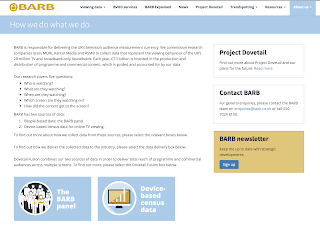Documentary formats: viewings
Expository documentary - We Are The Lambeth Boys
- Authoritative disembodied voiceover giving meaning to the images - throughout the documentary we are being given information by an unknown narrator on different subjects, ranging from activities to things about the boys themselves.
- voiceover provides facts and arguments for the images - the narrator is controlling the opinions we are meant to have for certain scenes, for instance when discussing the death penalty one of the boys mentions something the majority of viewers wouldn't agree with so the narrator tells the audience to "forgive them, they're only young".
- transparent representation - the documentary does a good job of mostly showing an accurate representation of the lives of the youth club goers and more specifically the Lambeth Boys, with minimal (noticeable) manipulation.
Observational documentary - High School
- Unobtrusive construction and depictions - Whole documentary focuses on a day at a standard American high school without intervention.
- Non-intervention of the filmmaker - No filmmaking presence throughout the documentary. No Voiceover and no presenter, just a camera and a school.
- Filmmaker is hidden - No filmmaker appears in the documentary at all.
- presents a transparent, neutral record of an event and audiences decide what to think about the text - No presence telling us what is happening or what to believe, purely just a day in the life of a high school covering many lessons with a few detentions and disciplinary actions thrown in.
Interactive documentary - Louis and the Nazi's
- Filmmaker is a participant - Louis Theroux is prominent throughout the documentary interviewing and confronting different people.
- Interaction between interviewees, the presenter and audience - As well as interviewing everyone on screen Louis will talk to the audience through the camera or in a voice over.
- Arguments are presented - There are many arguments between Louis and the many interviewees, mostly focusing on racial and national views.
- manipulation - Louis is amazing at acing as a clueless bystander to allow the interviewees to drop their guard for him to bombard them with loaded questions.
Reflexive documentary - POWAQQATSI
- exposes the conventions of documentary - The only convention truly upheld is the use of real people throughout the documentary. There are no interviews, no re-enactments, just the real lives of real people.
- experimental - The film is quite evidently experimental, combining a whole arrangement of shots and shot types with quite unique music for a sensory experience and a different way of looking at the lives presented to us.
Performative documentary - The Thin Blue Line
- emphasis on presentation - a lot of reenactments and interviews without much actual action as you would see in another documentary format.
- Use of reenactments, camera positions and soundtracks to immerse the viewer in the diagnosis - a lot of reenactments with fast cuts and extreme close ups accompanied by quite intense music.
- presents the subject matter in an expressive and evocative manner - A lot of emotion is put into the documentary, with a lot of emphasis on some of the more emotional and controversial subjects in the case.












Comments
Post a Comment